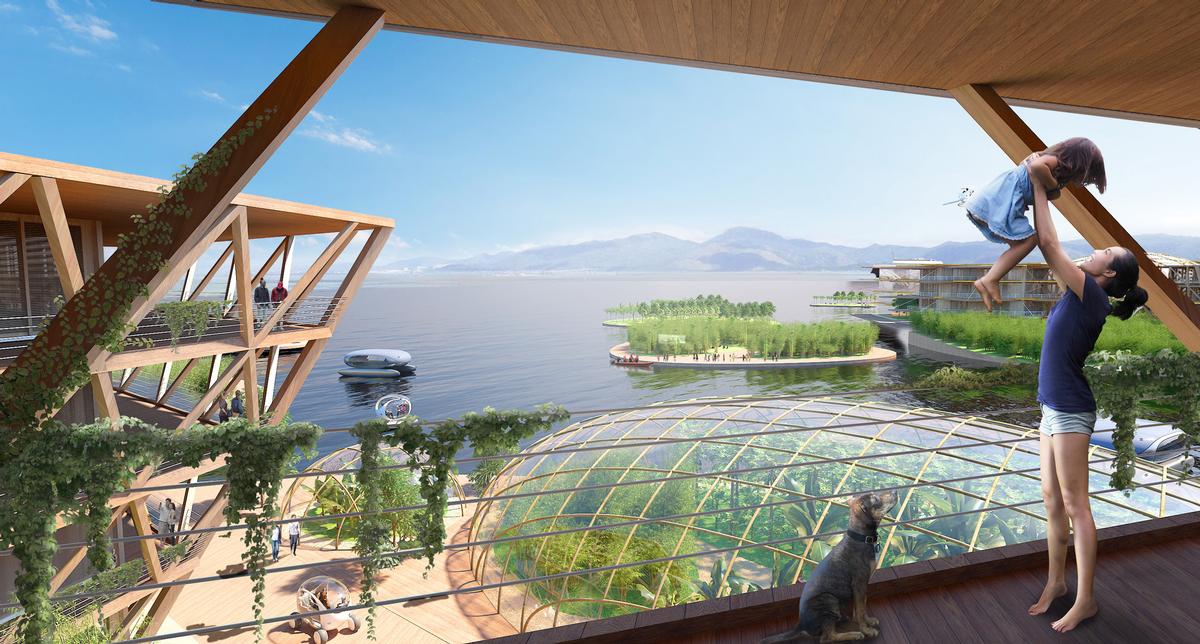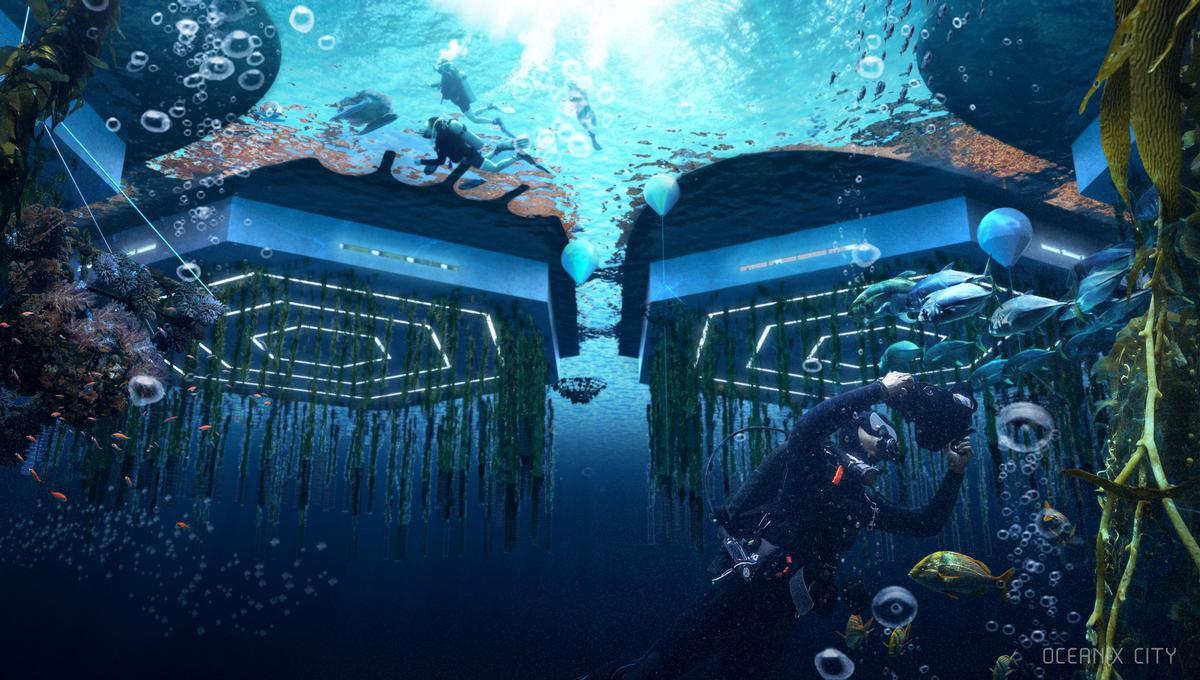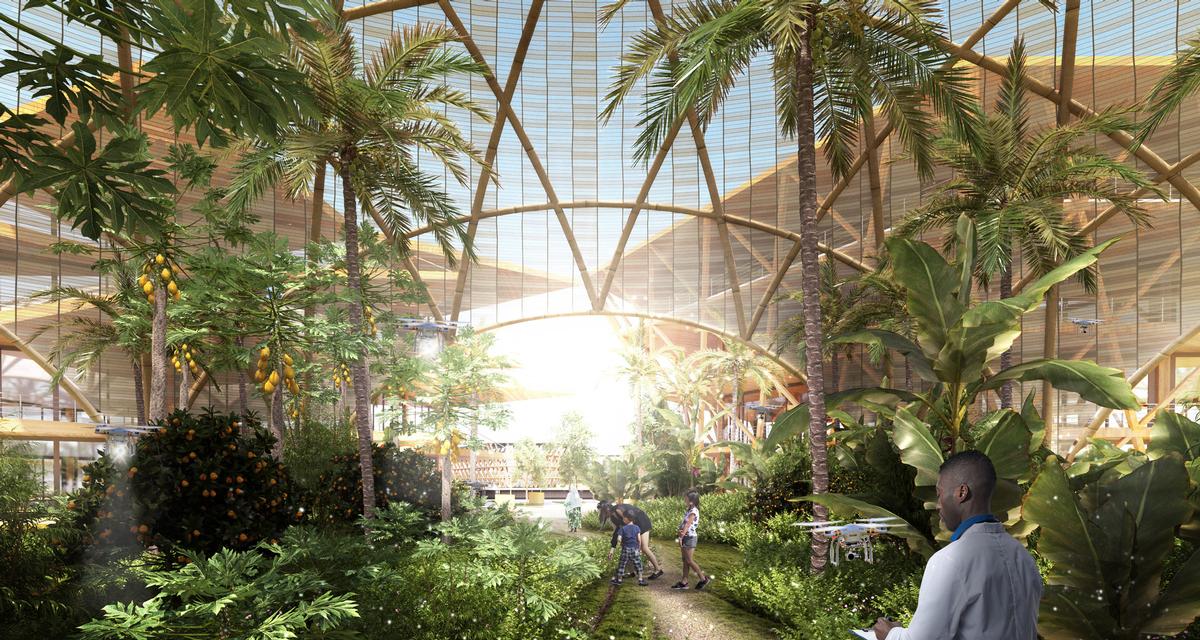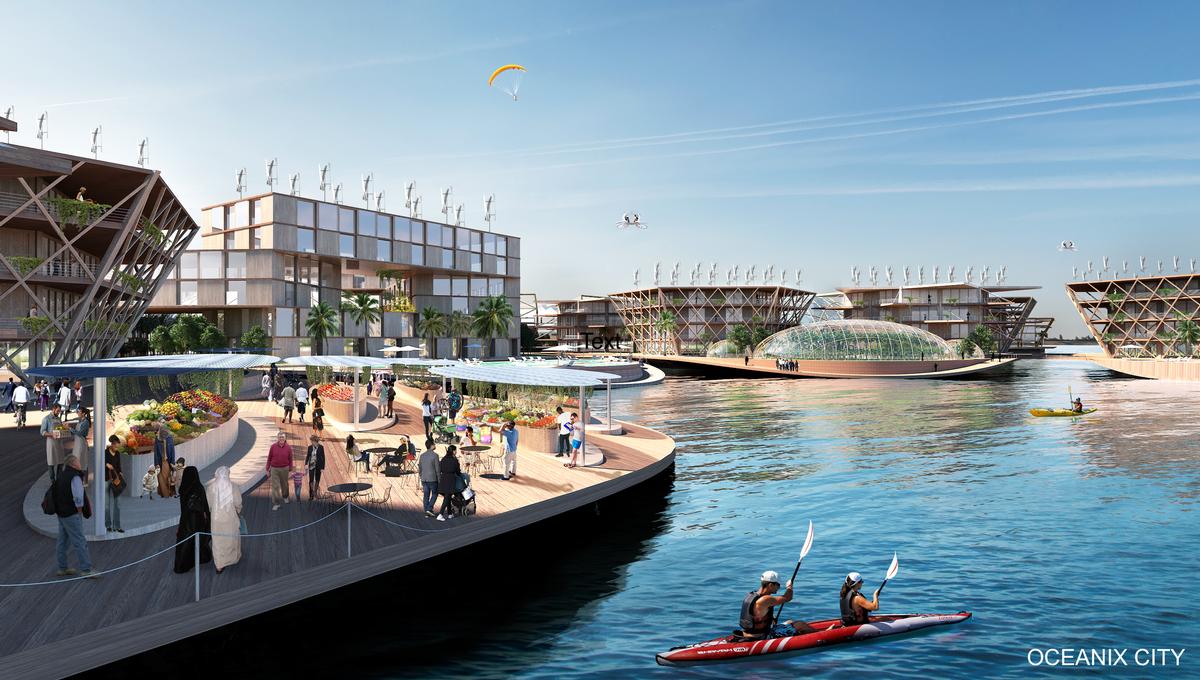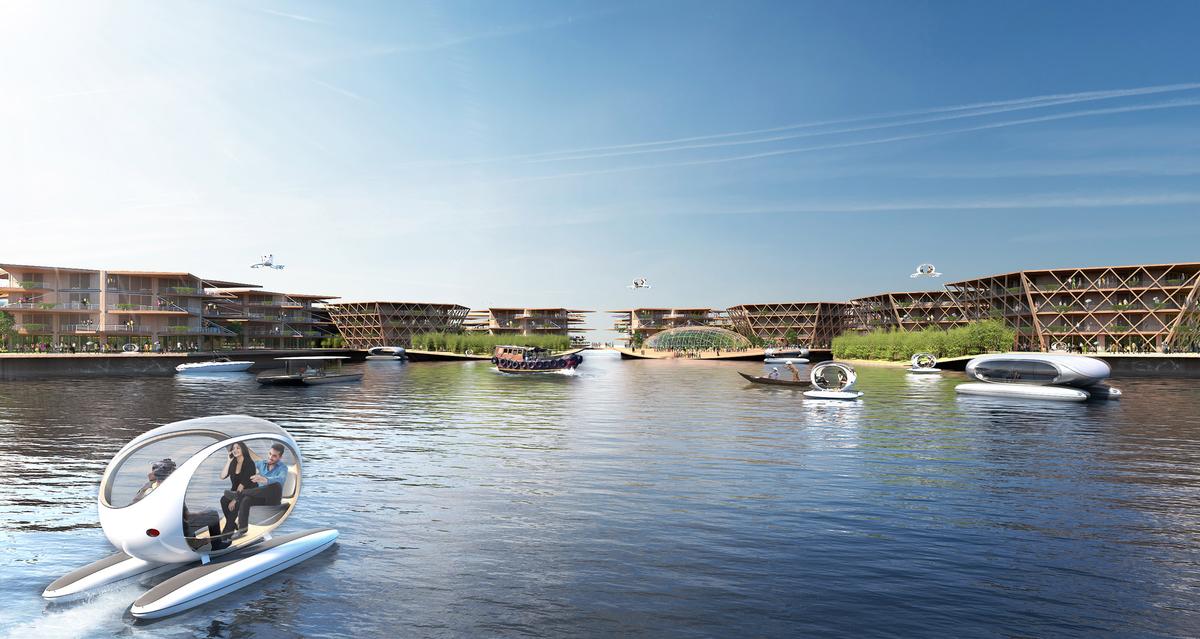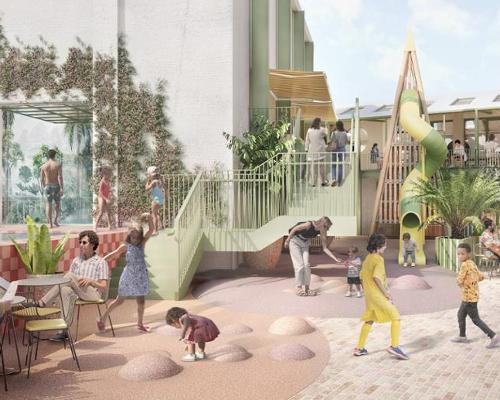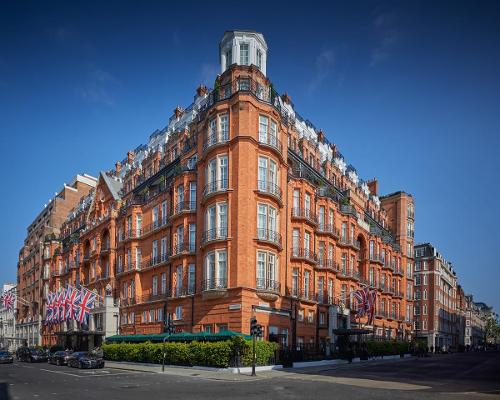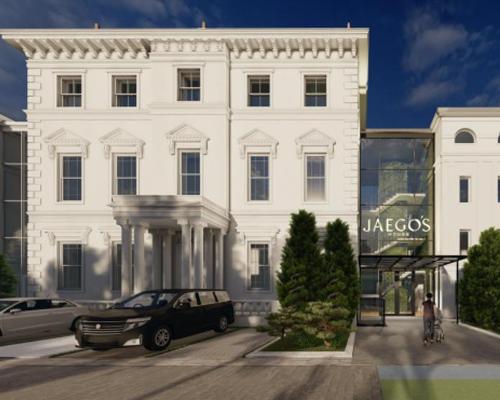Architecture firm Bjarke Ingels Group (BIG) and the Massachusetts Institute of Technology (MIT) have joined forces to conceptualise a man-made archipelago for OCEANIX, a non-profit company interested in exploring the viability of floating cities.
Intended to serve as a blueprint for future pelagic communities, the conceptual city – also named "Oceanix" – is designed to organically expand over time and accommodate up to 10,000 residents.
"The additive structure has a possibility of scaling indefinitely to provide thriving nautical communities for people who care about each other and our planet," explained Bjarke Ingels, founder and principal at BIG.
In the project team's vision, Oceanix residents would travel between neighbourhoods on electric jet-ski-like vehicles; manage reef farms of waste-eliminating flora and fauna, such as seaweed and oysters; and grow arbours of bamboo.
The city would also offer a range of affordable housing units and feature a variety of civic and recreational facilities, including spiritual centres, "landmark" art destinations, sports complexes, and a marketplace.
Plans for the scheme were first presented at the United Nations Habitat Roundtable on Floating Cities on 3 April in New York.
In a statement, Marc Collins Chen, co-founder of OCEANIX, said: "The technology exists for us to live on water, without killing marine ecosystems. It is our goal to make sure sustainable floating cities are affordable and available to all coastal areas in need. "They should not become a privilege of the rich."



